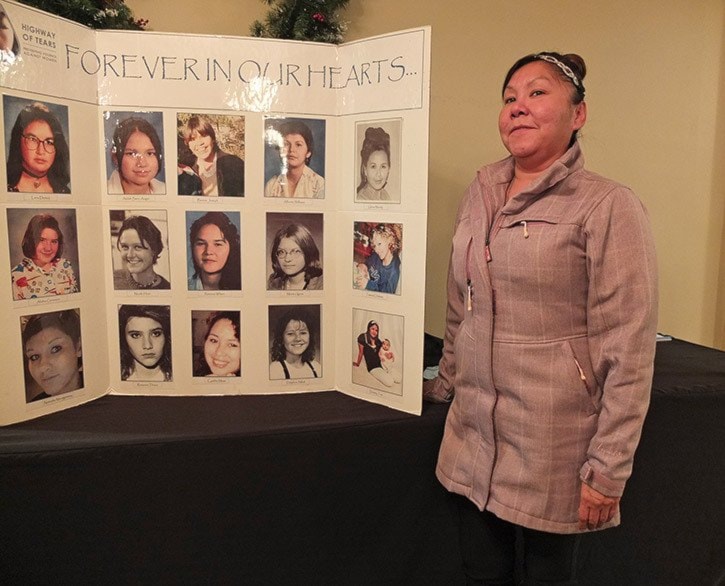Transportation Minister Todd Stone has promised to turn discussions into action after First Nations and government leaders met in Smithers today to consider transportation options to improve public safety along Highway 16.
About 90 people attended the day-long symposium co-hosted by the Ministry and the First Nations Health Authority (FNHA).
According to the Ministry, its goal was to address transportation challenges and find ways to improve services along Highway 16 between Prince Rupert and Prince George.
At least 18 women have been murdered or gone missing along 700-kilometre stretch of road in northern B.C.
Advocates say better public transportation is needed to connect small communities, which have limited access to services and amenities, and to reduce the need to hitchhike between towns.
The Ministry has ruled out a shuttle bus service, which was recommended by the Highway of Tears Symposium report in 2006.
Instead, it says it is focused on “community-based” transportation solutions which are suited to individual communities along the highway.
Examples of what that might look like were presented at today's meeting in Smithers.
Northern Health's medical transportation bus, a community-led service in Lake Babine, and the Seniors Helping Seniors program in Fort St. James were among the models discussed.
Minister Stone, who was not at the meeting but issued a press statement this afternoon, said it was an important step and promised to act on today's discussions.
“We’re now going to turn the discussions into action and to work on a plan that provides an effective model for transportation along the highway as quickly as possible,” said Stone.
Mary Teegee from Carrier Sekani Family Services had hoped to see a financial commitment to a better service today.
Her organization also runs the Highway of Tears initiative, which provides advocacy and support for vulnerable women and families of victims.
“We were there to ensure that the issue of the Highway of Tears and missing and murdered aboriginal women was not forgotten in this,” she said.
“The number one recommendation of course in the Highway of Tears recommendation is to have a shuttle bus and to develop a transportation system.
“I did bring that forward and I was hoping that there was going to be resources for that ... that hadn't been identified or announced today.”
Although Teegee said she had seen numerous reports and discussions on the issue, she was cautiously optimistic that this meeting was a step towards seeing improvements.
“The government says that they are committed to dealing with this issue,” she said.
“I'm not going to hold my breath, but I am hopeful.”
Today's meeting also considered the results of an FNHA survey on First Nations travel needs along the Highway 16 corridor.
FNHA engagement and coordination manager Mark Matthew told The Interior News his organization's main interest in partnering with the Ministry was to improve public transportation for medical reasons.
However, he said there may be opportunities for his organization to help other groups with transportation measures that improve public safety overall.
“Anything that looks solution-based beyond the medical transportation work that we're mandated to provide, we will have to have more discussions on how involved we actually would be on that,” said Matthew.
“By us supporting the process it may sort of provide us direction to pursue other external partnerships but it won't necessarily mean us delivering a service.”
Moricetown Band member Lorna Morris hoped any new service would help stop hitchhiking, which she said was a problem in her community.
“We have quite a few that are still on the road hitchhiking because of the rising cost of fuel and low-income, no jobs,” she said.
“It's hard to say what can we do.
“There is a lot of options but it takes money to move a rock.”
She said communities and governments had to work together to find the solution.
